The
concrete smeared crack model is used to simulate the plain
concrete. The concrete-smeared crack model assumes that
the monotonic load is applied to concrete under low confining
pressure. The low confining pressure corresponds to the
stress less than 1/5 to 1/4 of the maximum compressive
strength of concrete. For reinforced concrete, the embedded
elements are used. In this case, effects such as bond
slip from the interface of concrete and steel are considered
through tension stiffening.
The concrete smeared crack
model simulates the compression part of concrete using
a typical isotropic elasto-plastic model, and the tensile
part of concrete is simulated using a smeared crack model.
The smeared crack model is a method of simulating the
crack by adjusting the stress and stiffness at the integration
point, without reconfiguring the mesh. In the smeared
crack model, the band-width obtained based on the size
of the element is reflected in the crack behavior to avoid
mesh dependencies (Bazant and Oh 1983). The square root
of an area for a two-dimensional element and the cubic
root of a volume for a three-dimensional element are the
crack width of the element. For the higher order element,
the half of the square root and the cubic root are the
crack width. The tensile/compression uniaxial behavior
of the concrete smeared crack model is shown in the figure
below.
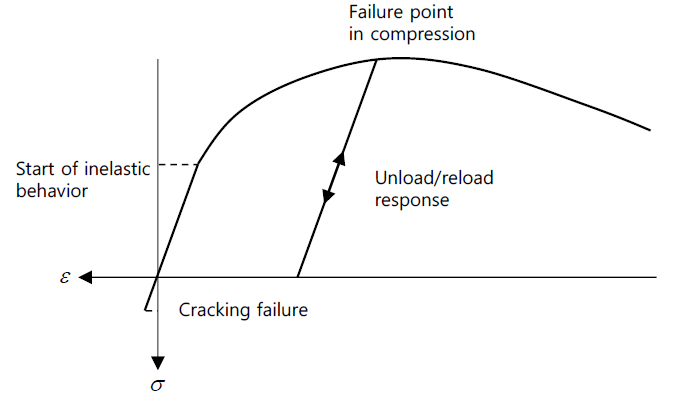
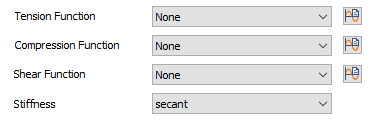
Tension Function
Define
tensile stress-strain function.
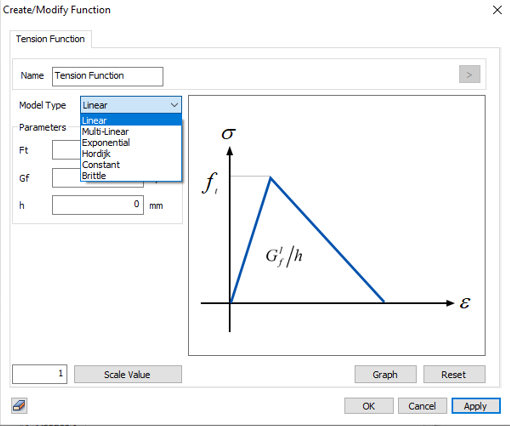
Compression
Function
Define
compressive stress-strain function.
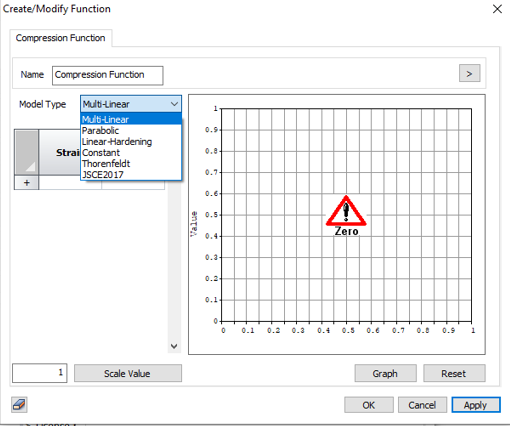
Shear
Function
Define
shear function upon cracking.
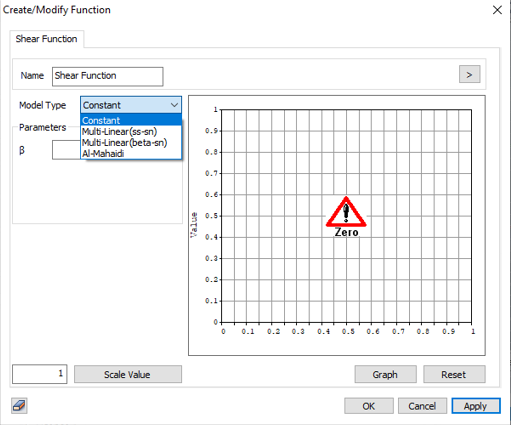
|
|
